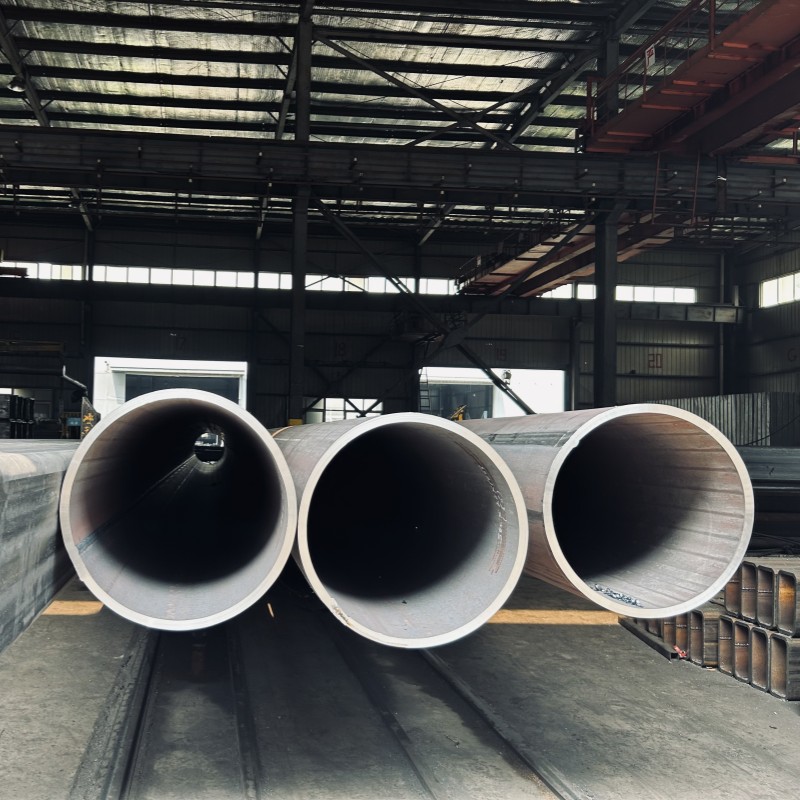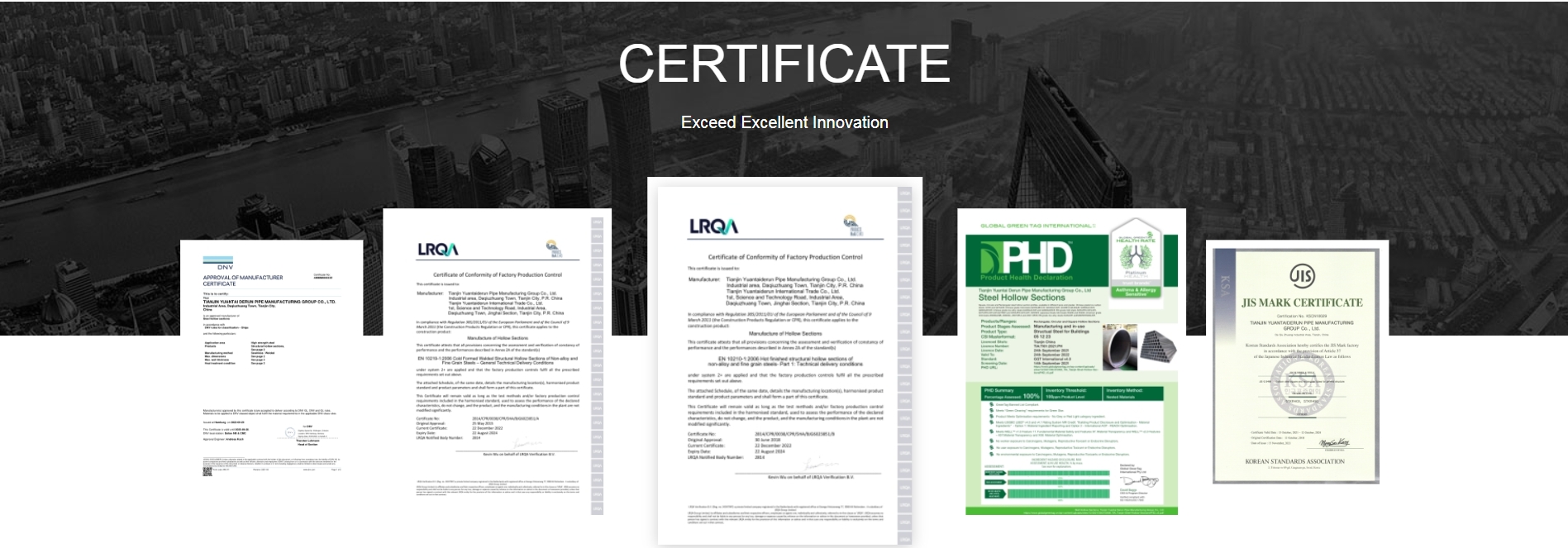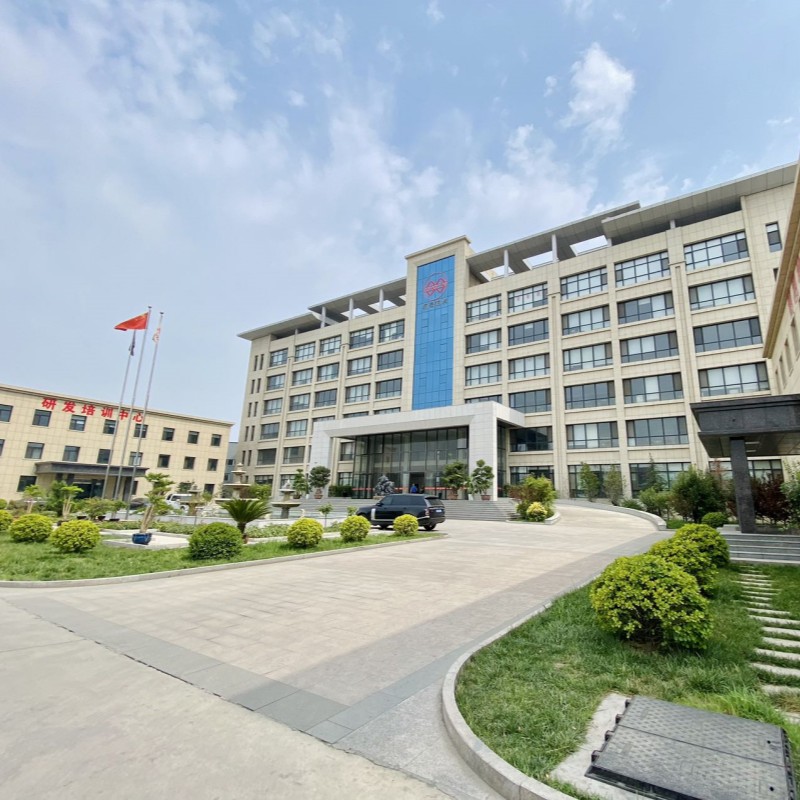

Thickness: 0.6 - 6 mm
Length: 6-12 m
Processing Service: Welding, Punching, Cutting, Bending, Decoiling
(1) First check whether there are welds and bulges on the inner and outer surfaces.
If it is a steel pipe without surface coating, first check the inner and outer surfaces of the steel pipe. If the welds can be seen, it can be determined to be a welded pipe. The weld morphology is generally divided into two categories: straight weld and spiral weld. Among them, the most common straight welds are resistance welding and submerged arc welding. Straight welds also have single seams and double seams.
The welds of general resistance welding (RW, ERW, or HFW) have different requirements for burrs for different uses. However, as long as the straight seam high-frequency welded pipe with slightly higher requirements is used, the internal and external burrs must be removed after welding. After removal, there will generally be obvious bulges, but there will be more or less some strip-shaped bulges (insufficient burr removal) or grooves (excessive burr removal).
If the resistance welding pipe is deburred and the internal and external anti-corrosion is done well, due to the leveling characteristics of the coating, after the coating is applied, the uneven surface will flow into a smooth surface. At this time, it is very difficult to distinguish which is the welded pipe from the surface alone.
Straight seam submerged arc welding (UOE, JCOE, etc.), due to process reasons, welding wire is added during the welding process of this type of product. At the weld, there will be some obvious smooth transition bulges on the inner and outer surfaces. Therefore, it is easier to identify. Even after coating treatment, the surface, if carefully distinguished, can also find the weld.
Straight seam submerged arc welding weld: Another common type of large-size welded pipe is spiral welded pipe (SRW), which is a type of submerged arc welding. Generally, the weld of this type of welded pipe is a spiral curve along the longitudinal direction of the steel pipe, which is equivalent to winding around the surface of the steel pipe. This type of weld will also have some obvious smooth transition bulges on the inner and outer surfaces. As shown in the figure below. This type of steel pipe, even after coating treatment, its surface, if carefully distinguished, can also find the weld.
Spiral welded pipe (SRW): Sometimes, some thick-walled pipes are also welded by girth welding. There may be several girth welds in the length direction. Generally, there are bulges on the inner and outer walls of the welds. Please refer to the following figure:
(2) Look at the color and strips of the steel pipe
During the production process of high-frequency welded pipes, due to high-temperature heating and deburring, the color of the weld and its heat-affected zone is generally different from other parts. It is generally cyan or significantly darker in color, which is significantly different from the surrounding color. It is distributed in the form of longitudinal strips with basically the same width and no obvious depth change. Seamless steel generally does not have such a long strip-like mark. Sometimes the underfill defects (referring to defects allowed to exist) caused by rolling will also present a similar tangential morphology, but the underfill is generally difficult to distribute throughout the length, and the width and depth cannot be guaranteed to be consistent.
(3) Look at the wall thickness tolerance level and ovality
Seamless steel pipes are mostly made by directly punching and rolling the tube billet. From the tube billet to the steel pipe forming, it is a three-dimensional complex deformation. Compared with the two-dimensional plate rolling, the wall thickness accuracy control is much more difficult. Generally, the wall thickness tolerance of steel pipes is about ±12.5%, some of which can reach ±8-10%, and very few can reach ±5%, and most of these steel pipes are thick-walled pipes. Since welded pipes are welded directly from hot-rolled/thick plate steel plates or steel coils, the wall thickness quality depends on the thickness control accuracy of the steel plate, which can generally reach within ±0.10mm.
The ovality level can also be used as a basis for whether it is a welded pipe. Steel pipes with small ovality are more likely to be welded pipes.
In terms of the sound produced when knocking, if the steel pipe is short, drop it on the hard ground and listen to the sound. If the sound is very crisp, it is a seamless steel pipe, and the sound of the welded steel pipe is relatively dull.
Judging by the smoothness of the inner surface of the end face of the steel pipe, the wall thickness uniformity of the general seamless pipe will be slightly worse, and the entire wall thickness circumferential contour will have a more obvious sense of ups and downs. In more serious cases, there will be internal ribs, which are generally symmetrically distributed longitudinally and maybe two or four symmetrically distributed. However, this type of rib defect (referring to the defects allowed to exist) generally has large width changes and large height changes in the longitudinal distribution.
The ends of welded pipes generally have a continuous, smooth, and smooth feeling to the touch, except for the weld seam, which may have high and low changes due to the weld seam.
Product name | Erw welded carbon steel pipe United Arab Emirates |
Material | Gr.A, Gr.B, Gr.C, S275J0H, S355JR, S355J0H, S355J2H, A36, SS400, Q195, Q235, Q345 |
Shape | square or rectangular or round |
Thickness | 0.5-60mm |
Length | 3-12M according to client requirement |
OD(outer diameter) | Square: 10*10-1000*1000mm; Rectangular: 10*15 800*1100mm; Round: 10.3mm-609mm |
Technology | ERW, LSAW, SSAW, Seamless |
MOQ | 5 Tons |
Certification | CE, LEED, BV, PHD&EPD, BC1, EN10210, EN10219, ISO9000, ASTMA500, ASTM A501, AS1163, JIS G3466 |
Brand | YUANTAI DERUN |
Standards | ASTM A500, ASTM A501, EN10219, EN10210, JIS G3466, GB/T6728, GB/T3094, GB/T3091 |
Delivery Time | 7-30 Days |
Payment method | TT/LC |

